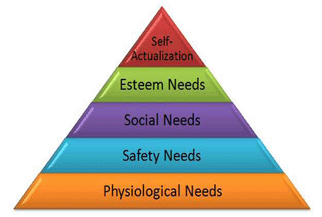Fredrick Winslow Taylor ( March 20, 1856 - March 21, 1915) commonly known as ’Father of Scientific Management’ started his career as an operator and rose to the position of chief engineer. He conducted various experiments during this process which forms the basis of scientific management. It implies application of scientific principles for studying & identifying management problems.
According to Taylor, “Scientific Management is an art of knowing exactly what you want your men to do and seeing that they do it in the best and cheapest way”. In Taylors view, if a work is analysed scientifically it will be possible to find one best way to do it.
Hence scientific management is a thoughtful, organized, dual approach towards the job of management against hit or miss or Rule of Thumb.
According to Drucker, “The cost of scientific management is the organized study of work, the analysis of work into simplest element & systematic management of worker’s performance of each element”.
1. Development of Science for each part of men’s job (replacement of rule of thumb)
a. This principle suggests that work assigned to any employee should be observed, analyzed with respect to each and every element and part and time involved in it.
b. This means replacement of odd rule of thumb by the use of method of enquiry, investigation, data collection, analysis and framing of rules.
c. Under scientific management, decisions are made on the basis of facts and by the application of scientific decisions.
2. Scientific Selection, Training & Development of Workers
a. There should be scientifically designed procedure for the selection of workers.
b. Physical, mental & other requirement should be specified for each and every job.
c. Workers should be selected & trained to make them fit for the job.
d. The management has to provide opportunities for development of workers having better capabilities.
e. According to Taylor efforts should be made to develop each employee to his greatest level and efficiency & prosperity.
3. Co-operation between Management & workers or Harmony not discord
a. Taylor believed in co-operation and not individualism.
b. It is only through co-operation that the goals of the enterprise can be achieved efficiently.
c. There should be no conflict between managers & workers.
d. Taylor believed that interest of employer & employees should be fully harmonized so as to secure mutually understanding relations between them.
4. Division of Responsibility
a. This principle determines the concrete nature of roles to be played by different level of managers & workers.
b. The management should assume the responsibility of planning the work whereas workers should be concerned with execution of task.
c. Thus planning is to be separated from execution.
5. Mental Revolution
a. The workers and managers should have a complete change of outlook towards their mutual relation and work effort.
b. It requires that management should create suitable working condition and solve all problems scientifically.
c. Similarly workers should attend their jobs with utmost attention, devotion and carefulness. They should not waste the resources of enterprise.
d. Handsome remuneration should be provided to workers to boost up their moral.
e. It will create a sense of belongingness among worker.
f. They will be disciplined, loyal and sincere in fulfilling the task assigned to them.
g. There will be more production and economical growth at a faster rate.
6. Maximum Prosperity for Employer & Employees
a. The aim of scientific management is to see maximum prosperity for employer and employees.
b. It is important only when there is opportunity for each worker to attain his highest efficiency.
c. Maximum output & optimum utilization of resources will bring higher profits for the employer & better wages for the workers.
d. There should be maximum output in place of restricted output.
e. Both managers & workers should be paid handsomely.


